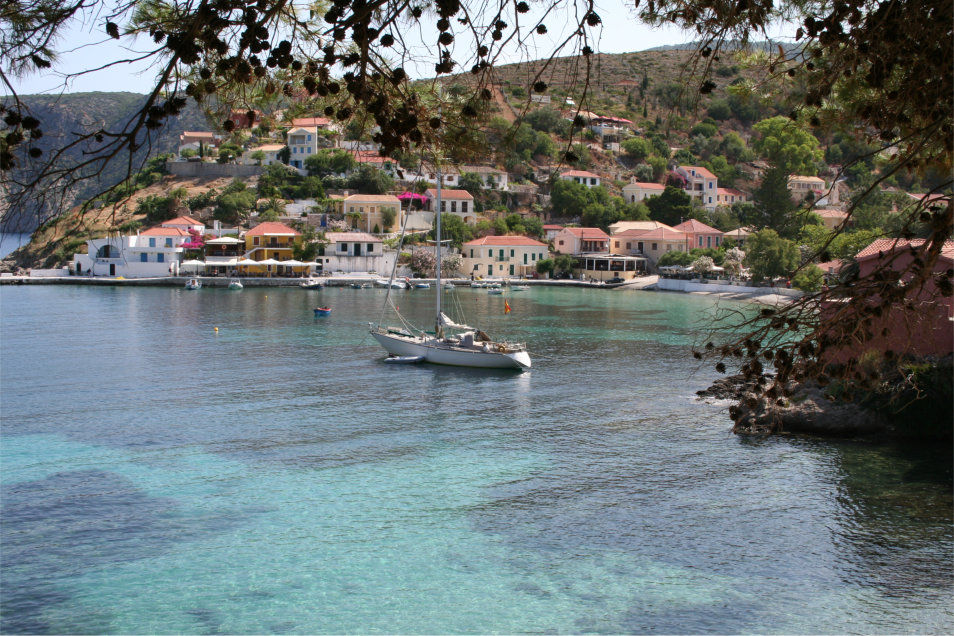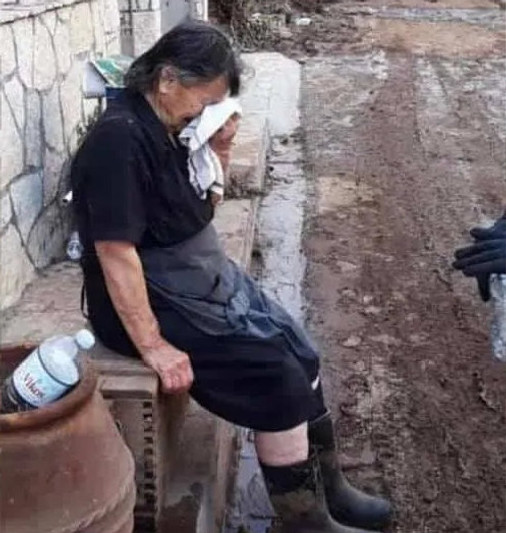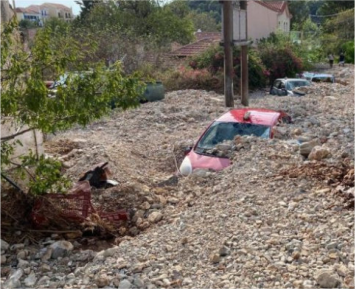
Beautiful
Assos is
no more.
September 20th 2020.

One of my favourite places is Assos, a jewel of the beautiful Ionian island of Cephalonia made famous by Louis de Bernières in Captain Corelli's Mandolin.
Assos lies on the rugged west coast of the island, nestled far below towering cliffs on a thin strip of land that connects the island of Frurio, complete with its Venetian castle, with the main island. It is an idyllic spot which, because of its comparative remoteness, has yet to be overwhelmed with visitors and the trappings of tourism. It is a truly breathtaking part of Cephalonia, and the fact that it has just been almost completely destroyed by cyclone Ianos is a tragedy.
On September 17th, the cyclone, popularly know as a 'medicane' (Mediterranean hurricane) hit Zakynthos (Zante), Ithaca and Cephalonia from the west. Assos bore the full force of the storm and according to the Greek City Times, Assos is no more.
Volunteers Kefalonia posted “We found people living in complete darkness between the ruins – in the mud and the rocks. The amount of mud and rocks is huge. The coast road, the tavernas, the port and the beach simply don't exist anymore” . Aid is now reaching them but the Greeks are saying that it will take months before the road down to the village can be repaired, as the main road along the top of the cliffs has also been very badly damaged.
I have visited Greece many times and been caught in a few storms, but I had no idea that it suffered from hurricanes. It transpires that it has always endured some severe 'tropical-like' storms – some of them very severe – but seldom reaching hurricane strength. The threshold for a medicane is lower than that of a tropical storm, at 29mph (47km/h) per hour. The threshold for tropical storms generally is 50mph (80km/h). To be classified a hurricane, a storm must have one minute of sustained winds at 74mph (119 km/h).
Storm Ionis was measured at Beaufort 10 in Zante, to the south of Cephalonia. However it is apparent from the damage on the island that the wind speeds certainly exceeded force 10 (55-63mph or 89-102 km/h). Beaufort's description of force 11 is 'widespread damage' and of 12 - hurricane force – as 'devastation'. Whether or not it was a hurricane is academic. The fact is that these storms, which were once rare, are occurring with increasing regularity.
In the 1950's, for example, there were none. There was one in the 60's, and 2 in the seventies. Fast forward to this century, and there have been 48 since the turn of the millennium, and as well as increasing in regularity, they are increasing in intensity.
The storms of the last century seldom exceeded 50 mph (80km/h) Storm Leucosia (Jan 1982) reached windspeeds of 57mph (93km/ph) and another un-named cyclone reached 56mph (90 km/h) in October 1996. Storm Cornelia (Octber 1996) reportedly had gusts of 67pmh (108 km/h).
The story since the turn of the century has been of substantially stronger winds. Queria (Sept 2006) had winds of 89 mph (144 km/h) and Qendresa (Nov 2014) reached 95.5 mph (153.7 km/h).
None of the storms can be attributed to climate change; i.e. it is simply not possible to say for example that storm Ionis happened directly because of climate change. There are Mediterranean storms the Odyssey. However the increase in frequency and intensity is precisely the consequence predicted by climatologists and it corresponds with the increases in extreme weather events we are seeing all over the world.
There is no reason to be surprised by this storm, and no reason to think that a tiny coastal village would somehow be unaffected. Yet still I am surprised. It's not some far-flung Bangladeshi village, or an island in the Pacific - and that's not to say they are in some peculiar way any less tragic. To admit my surprise is an admission of weakness and possibly even hypocrisy. My surprise is because it really hit home. It's because it's right there in beloved Greece, and in lovely Assos where I have spent many an idyllic day.
All of a sudden, the abstract became the personal.
This climate change thing is becoming very real.
You can make a donation to help Kefalonia in its hour of need here. Anything will help.
"The coast road,
the tavernas, the port and the beach simply
don't exist anymore."

The road down to Assos. Pic: Charlie Menegatos.

The harbour. Pic: Kefalonia Press

Assos before Storm Ionis. Pic: Steve Grant
With acknowledgements to Athena Sirmanoglou and to
HOME | BLOG | ATHEISM | GRANT'S GUIDE | CONTACT
